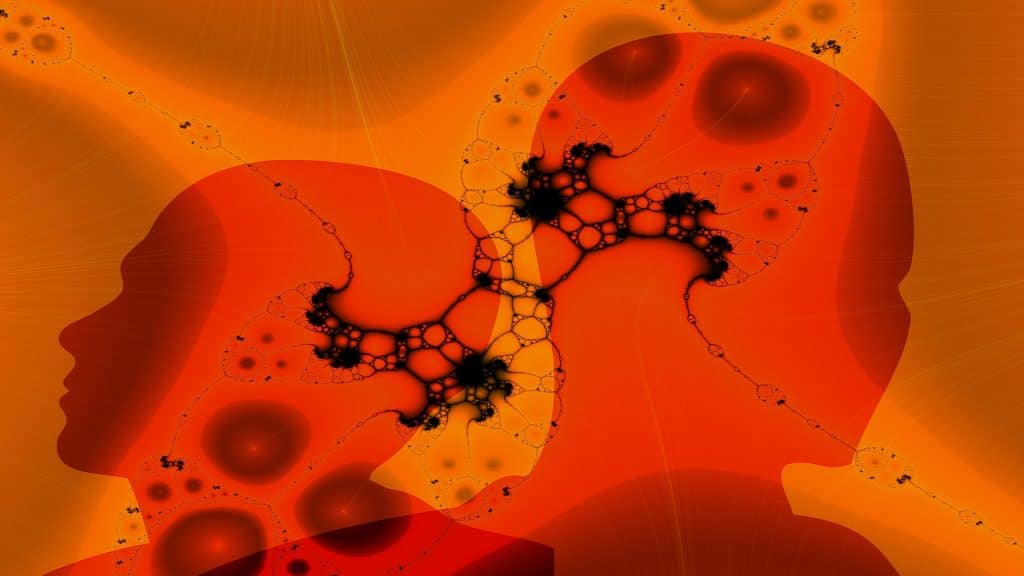32 Key Stroke Statistics & Facts for a Much Safer 2024

A stroke is a harrowing, life-changing experience. Awareness is of utmost importance here. That is why we suggest that you consider the following stroke statistics and facts—some sobering, some hopeful.
Strokes occur when blood flow is cut off to a part of the brain. Then, the lack of oxygen and nutrients leads to the death of brain cells in the affected area. It is known as an ischemic stroke, and it is by far the most common type of stroke. Another kind, a hemorrhagic stroke, can occur following the bleeding inside the brain.
Keep on reading to gain a greater insight into the topic.
Top 10 Stroke Statistics for 2024
- One in four strokes is recurrent.
- The 2-year mortality rate of hemorrhagic stroke patients stands at 58.7%.
- Cerebrovascular accidents (strokes) are the second leading cause of death in the world.
- Stroke statistics point out that the average age of female stroke patients is 75.
- Globally, 5.5 million people die from stroke and stroke-induced complications.
- One in four people over the age of 25 will have a stroke at some point.
- Stroke death rates point out that stroke is the fifth leading cause of death in the US.
- Stroke expenses in the US amount to around $35 billion every year.
- Approximately 80% of strokes can be prevented with healthy lifestyle changes.
- COVID-19 increases the risk of ischemic stroke by up to 5%.
Essential Stats on Strokes
Read the following stats to learn which age groups are at the highest risk of having a stroke. You will also learn about different types of strokes and discover which type has the highest incidence. Given current stroke prevalence, we ought to stay in the know. Without further ado, let’s dive right in!
[visualizer id=”96823″]
1. Ischemic strokes make up 87% of all stroke instances, while hemorrhagic strokes—13%.
(John Hopkins Medicine)
An ischemic stroke is caused by a blockage of an artery or vein. A hemorrhagic stroke, on the other hand, is caused by bleeding. As a matter of fact, the former makes up 87% of total stroke instances, while the latter amounts to 13%, as stroke percentages affirm.
2. There are more than two types of stroke.
(John Hopkins Medicine)
There are several types of stroke, categorized by what causes strokes in the first place. Ischemic strokes can be divided into thrombotic and embolic strokes. The latter is caused by plaque debris or a blood clot that develops elsewhere in the body and then travels to the brain’s blood vessels through the bloodstream. A thrombotic stroke occurs when a blood clot forms in the blood vessels of the brain.
In contrast, stroke facts remark that hemorrhagic stroke occurs when a blood vessel bursts and bleeds into the brain. This type of stroke can be of two subtypes—an intracerebral and a subarachnoid hemorrhage. An intracerebral hemorrhage is bleeding from the blood vessels within the brain. Subarachnoid hemorrhage stands for bleeding that happens between the brain and its membranes.
3. Stroke statistics point out that the average age of female stroke patients is 75.
(Web MD) (Health Day)
As for men, the average age is somewhat lower—65 and older. Since both the stroke survival rate and the average age of death arising from stroke and stroke complications depend on many factors, it’s difficult to explain this disparity between the genders.
4. During the age of 25–44, women are more prone to strokes than their male peers.
(Heart) (NIH)
Strokes can occur at any age, even in childhood. When looking into the stroke age range, we can see that there isn’t any difference in the number of strokes between women and men at the age of 15–24 and in those aged 75 and older. That said, women aged 25–44 have more strokes than men of the same age. Astoundingly, strokes are more prevalent in men aged 45–75.
5. Recurrent stroke statistics indicate that one in four strokes each year is recurrent.
(CDC)
Typically, physical and occupational therapy are essential to rehabilitation. Besides the therapy and prescribed medicine, joining a patient support group after a stroke can be of great help, too. Unfortunately, the stroke recovery rate points to one in four strokes being recurrent. That is why the best stroke treatment ought to address the underlying cause.
6. The mortality rate for ischemic stroke is higher in men (33.7%) than in women (19.8%).
(PubMed)
One study examining 959 stroke victims found a difference in mortality in terms of gender. Namely, the study investigated the stroke survival rates of people aged 18 to 50 admitted to the Radboud University Nijmegen Medical Centre, the Netherlands. In detail, the 20-year mortality among 30-day survivors of ischemic stroke was higher in men than in women—33.7% vs. 19.8%, according to stroke statistics by gender.
7. The 2-year mortality rate of hemorrhagic stroke patients stands at 58.7%.
(NCBI)
Statistics point to the 2-year mortality rate of 33.6% in ischemic stroke patients. At the same time, the 2-year mortality for hemorrhagic stroke patients is 58.7%. So, don’t let your guard down and visit your doctor regularly for much-needed rehabilitation and prevention.
8. More than one complication was experienced in 62% of all complicated stroke cases.
(AHA Journals)
There are cases with fewer chances of recovery from stroke and its complications. Following that, one study analyzed the effects of a stroke, focusing on its complications. Namely, falls, skin breaks, chest infections, depression can surface as complications of a stroke. In 62% of complicated stroke cases, more than one complication follows a stroke. Even though some may not seem severe, others, like falls in older people, can have serious consequences—a broken hip is no joke.
9. Stroke facts note that people with higher education are more aware of early stroke symptoms.
(CDC)
The signs and symptoms of stroke can be frightening. However, proper education is vital to act in time. Therefore, knowing the signs of a stroke can save a life. It turns out that people with higher education are much more likely to be aware of stroke symptoms and call emergency services in time. While at it, if you want to get emergency help even quicker, use medical alert devices.
Global Stroke Facts and Stats
Terrifyingly, strokes are among the main causes of death in the world. That said, some countries witness more stroke cases than others. Keep reading to learn more about stroke statistics worldwide.
[visualizer id=”96874″]
10. Strokes are the second leading cause of death in the world.
(World Health Organization)
According to the World Health Organization, stroke is the second leading cause of death globally. According to stroke statistics worldwide for 2019, it follows ischemic heart disease, which accounts for 16% of all deaths. The third among the main causes of death is chronic obstructive pulmonary disease. Lower respiratory infections and neonatal conditions round up the top-5 causes of death worldwide.
11. Globally, 5.5 million people die from stroke and stroke-induced complications.
(World Stroke Organization) (Health Line)
Even though strokes aren’t always fatal, the stroke fatality rate verifies that 5.5 million people die due to stroke and stroke complications globally. That being said, how you are affected by a stroke strongly depends on its location, severity, and how fast you seek treatment.
12. Stroke kills more people than AIDS, tuberculosis, and malaria.
(The Sentinel)
The number of strokes taking place every year is 15 million. The stroke mortality rate contributes to a death toll of almost 6 million people. Stroke also leads to a long-term disability of another 5 million people. Annually, stroke causes more deaths than TB, AIDS, and malaria combined. Still, it remains a silent epidemic.
13. One in four people over the age of 25 will have a stroke in their lifetime.
(World Stroke Organization)
According to stroke age statistics, one in four people over the age of 25 will have a stroke in one form or another at some point. That includes a silent stroke, a TIA, and full-blown ischemic and hemorrhagic strokes.
14. 70% of strokes occur in low- and middle-income countries.
(NCBI)
World Health Organization stroke statistics point to a large disparity between first and third world countries when it comes to stroke incidences. Namely, 70% of strokes happen in low- and middle-income countries. In fact, over the last 40 years, the number of strokes in those countries has more than doubled.
US Stroke Statistics
Stroke is among the main causes of death and long-term disability in the US, costing America a fortune. Now, let’s discover which type of stroke is more frequent and which gender is more likely to have a stroke. The section below will also provide us with information on the prevalence of stroke in the US. You will also discover the link between cardiovascular diseases and stroke.
[visualizer id=”96880″]
15. Every year, more than 795,000 people in the US have a stroke.
(CDC)
Every year, almost 800,000 people in the US have a stroke. As many as 610,000 of them have a new stroke or have a stroke for the first time. For 185,000 people, it’s a recurrent stroke. Furthermore, someone in the US has a stroke every 40 seconds, according to stroke rate statistics.
16. Stroke reduces mobility in over 50% of stroke patients age 65 and over.
(CDC)
One of the main causes of long-term disability is a stroke. Namely, stroke disability statistics emphasize that stroke can reduce mobility in more than 50% of stroke survivors age 65 and over. While organizations, like the American Stroke Association, try to help people get as much control over their lives as possible, their capabilities are limited.
17. Women make up 55% of all stroke patients in the US.
(Medscape)
Stroke is one of the main causes of death in the US, affecting both men and women. However, women seem to take a slight lead in this grim race, as stroke demographics show that they make up 55% of all stroke patients.
18. In the US, the direct cost of stroke amounts to $35 billion every year.
(Neuro News)
Statistics reveal that the direct cost of cerebrovascular accidents amounts to $35 billion. It includes expenses related to healthcare services, medicine, and missed days of work. Consequently, these expenses tend to burden the national budget.
19. In the US, there are 200,000–500,000 mini-strokes every year, as per stroke statistics.
(Mayo Clinic) (AJMC)
Mini strokes, medically known as transient ischemic attacks (TIAs), are caused by a sudden and brief blockage of blood supply to the brain. While the name mini-stroke might make it seem benign, it is still alarming as it can precede an actual stroke. Even though it is difficult to pinpoint the exact number of TIAs in the US, statistics on strokes uncover that their approximate number falls between 200,000 and 500,000 mini-strokes a year.
20. Black people are 50% more likely to have a stroke compared to their White adult counterparts.
(HHS)
Black men are also 70% more likely to die from a stroke compared to non-Hispanic White men. Stroke statistics disclose vital information about Black women, too. Compared to non-Hispanic White women, Black women are twice as likely to have a stroke.
21. In the US, the stroke hospitalization rate of 1999–2009 decreased by 20% for older people.
(CDC)
As you already know, older people are at the highest risk of having a stroke. However, stroke statistics by age disclose something genuinely uplifting. During 1999–2009, there was a 20% decrease in the stroke hospitalization rate of people aged 65–74 and those aged 85 and over. Furthermore, it has also decreased by 24% for people aged 75–84.
22. Stroke death rates point out that stroke is the fifth leading cause of death in the US.
(CDC) (Medical News Today)
In the past five years, these causes of death in the US have stayed the same. To be more precise, stroke morbidity and mortality statistics claim that stroke is the fifth among the main causes of death after heart disease, cancer, unintentional injuries, and chronic lower respiratory disease.
23. Nearly nine in ten of all stroke deaths reported in the US are due to ischemic strokes.
(CDC)
As far as the stats on ischemic stroke vs. hemorrhagic stroke are concerned, ischemic strokes are much more prevalent. In fact, 87% of all strokes occurring in the US are ischemic strokes—those caused by a blockage in blood flow to the brain.
24. Every year, around 150,000 of the 860,000 Americans who die of CVD are killed by a stroke.
(CDC)
Cardiovascular disease (CVD) and stroke are closely linked. To put it differently, about 860,000 Americans die of cardiovascular disease every year, and around 150,000 of them die from stroke. That means one in every nine CVD deaths is because of a stroke.
25. The decline of the stroke death rate has stopped in some areas of the US.
(CDC)
A 2017 study also stated that the decline has begun to reverse, or, at best, stall with some populations. In particular, declines in stroke death rates didn’t continue in 38 states in 2000–2015.
Stroke Prevention and Causes
The first thing to remember is that strokes are treatable if detected in time, which is a point often overlooked. Facts about stroke suggest that although in many circumstances there’s nothing you can do to prevent a stroke, sometimes it’s up to you since you can reduce some of the risks. Read on and stay informed.
26. Approximately 80% of strokes are preventable.
(CDC)
Even with the high prevalence of stroke, as we’ve mentioned earlier in the article, stroke is preventable. Here’s the catch. Introducing healthy lifestyle changes and monitoring your health conditions can help prevent a stroke. We urge you to take the initiative, pay regular visits to a doctor, and lead a healthy life. Exercising more and making diet changes (including meal replacement shakes, if need be) will also improve your overall well-being.
27. Exercise can reduce the risk of stroke by 25%, according to stroke facts.
(Geneva Healthcare)
Regular physical activity can reduce your risk of stroke. Be as active as you only can with small everyday activities, like taking the stairs instead of the elevator, walking instead of driving, or doing some housework. Astoundingly, 30 minutes of exercise five times a week is enough to reduce the risk of stroke by 25%.
28. People with diabetes have an increased risk of a stroke with an odds ratio of 1.16.
(Stroke) (Practical Diabetes)
Having diabetes means you have too much blood sugar, which can damage the blood vessels, leading to a build-up of fatty deposits. They then can cause a blood clot, which can reach the brain and eventually cause a stroke. To point out, facts about strokes have discovered that there’s an odds ratio of 1.16 between diabetes and a stroke—yet another reason why thorough diabetes management is essential.
29. Secondhand smoke increases the risk of a stroke by 20%–30%.
(CDC)
Nonsmokers who breathe secondhand smoke at work or home increase their risk of having a stroke by up to 30%. Generally, usual cigarette smoking, whether it is firsthand or secondhand, can lead to a stroke. The risk can be reduced, however, by quitting smoking or avoiding places with too much smoke.
30. Heart disease is a risk factor for stroke.
(CDC)
Heart disease and stroke statistics imply that heart disease is one of the major risk factors. For instance, coronary artery disease can increase the risk since plaque forms in the arteries and stops the oxygen-rich blood flow to the brain. Moreover, irregular heartbeat, enlarged heart chambers, and heart valve defects may also cause blood clots, which may eventually lead to a stroke.
31. People with high-stress intensity have twice the chance of a fatal stroke, stroke statistics reveal.
(Research Gate)
One study examining stress levels of 5,604 men and 6,970 women recorded 929 first-ever stroke instances. Subjects who have reported high-stress intensity levels had twice the stroke risk compared to those who felt very little stress. That said, it has not been determined if stress itself leads to strokes.
32. Stroke statistics for 2020 reveal that COVID-19 increases the risk of ischemic stroke by up to 5%.
(Frontiers in Neurology)
The ongoing pandemic has had some adverse effects. That being the case, there is a 2.5%–5% incidence of acute ischemic stroke in COVID-19 patients. Usually, a stroke develops a few days after a person has been infected with COVID-19. What’s more, in some rare cases, stroke was the reason for the hospitalization of COVID-19 patients.
Conclusion
Having a stroke is a frightening and distressing experience, as depicted by numerous stroke statistics. It takes away the confidence, independence, health, and ability of the affected person, and it has a tremendous impact on their families, too. That’s why it’s vital to be on the lookout as much as possible and learn about its causes, warning signs, and symptoms. What’s important to realize is that it is highly preventable since there are ways to minimize one’s chances of having a stroke.
FAQs
What is the number one cause of stroke?
Although there are many factors for a stroke, the leading one is high blood pressure, commonly called hypertension. Moreover, you are in danger if your blood pressure is 140/90 or higher. If you haven’t, pay a visit to your doctor and discuss your options and further treatment.
What percentage of strokes are fatal?
Having a stroke doesn’t necessarily mean death since some people survive it unharmed. That said, according to the Stroke Association, within the first 30 days, one in eight strokes is fatal. Then, within the first year, it’s one in four strokes that is fatal.
What are the chances of having a stroke after a stroke?
The thing most people are scared of after having a stroke is having another one soon. According to neurologist Blake Buletko, the risk of a second stroke is the highest within the first two days. What’s more, a stroke patient remains vulnerable for up to three months or even up to a year following the first stroke.
What are the odds of having a stroke?
High blood pressure, stress, obesity, heavy drinking, high LDL cholesterol levels, an irregular heart rhythm, diabetes, and smoking are only some of the factors that increase the chances of having a stroke. So, consider the already mentioned stroke statistics and cut the odds by managing these conditions and taking care of your overall health.






